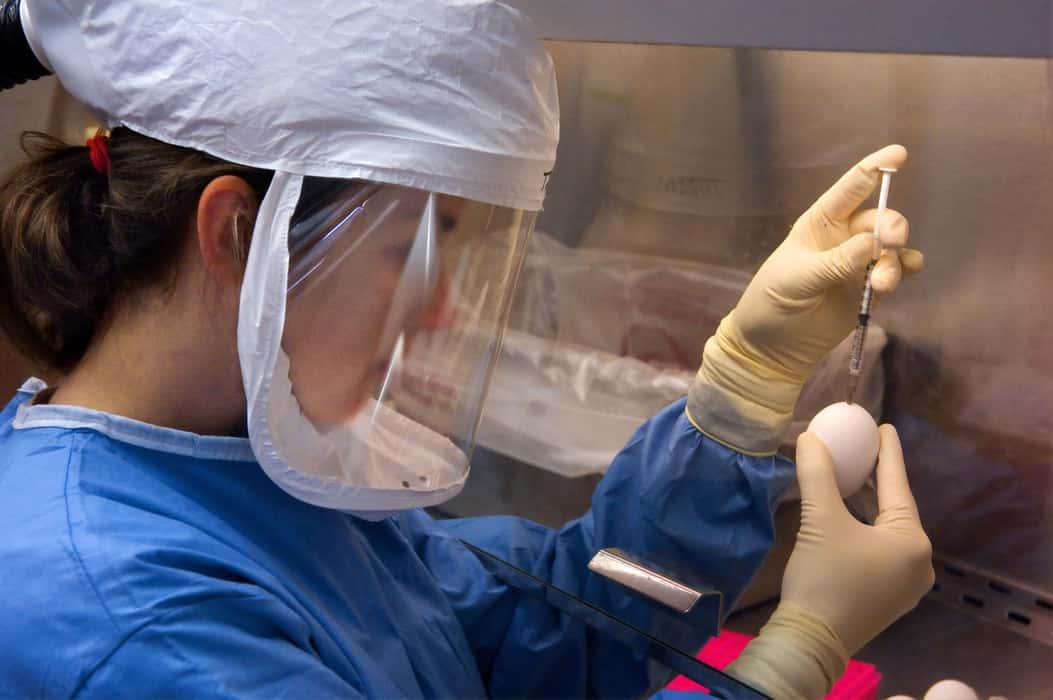The Flu Shot: What’s In It?
How Dangerous is the Flu?
Everyone is aware that winter and fall bring with it outbreaks of the common cold and the flu. For some people, the flu shows no or mild symptoms that do not disrupt their daily life. For others, however, the flu can be debilitating and cause a multitude of health issues.
The flu is characterized by coughing, sore throat, runny nose, muscle aches, fever, and headaches. All of which can be felt at varying degrees of severity. This is why doctors recommend receiving the flu shot every year to fight against the virus and keep yourself and others healthy.
This flu season is especially important to consider the flu shot because of the Covid-19 pandemic. It’s possible to have an outbreak of both viruses simultaneously, so taking preventative measures against the flu can significantly reduce this scenario’s possibility.
There is no vaccine for Covid-19, so practicing proper precautions and taking the flu vaccine seriously can positively affect this year’s flu season.

What Are The Main Ingredients In The Flu Vaccine?
According to the CDC, receiving a flu vaccine is the number one way to protect against contracting the flu or spreading the virus.
Flu vaccines contain several ingredients. Each ingredient acts with the others to guarantee it is safe for injection and protect against the virus. While some elements may seem unsafe, they are introduced in such small amounts that they do not produce the same harmful effects on the human body.
Related Link: How to Respond If an Employee Tests Positive for COVID-19
Ingredient: Influenza Viruses
The ingredient that is the most known to be in the flu vaccine is influenza itself. Deactivated, or weakened, influenza viruses are added to the vaccine so your body can identify and attack the virus once you come in contact with it again.
Two types of shots protect against the flu. The standard shot is four-component, but you can also receive a three-component shot. The three-component shots include the H1N1 and H3N2 strains, which are the Michigan and Hong Kong strains. These are both A strains of influenza. This vaccine also contains one of the B strains.
The four-component vaccine contains both of the same A strains as the three-component and also one additional B strain.
Ingredient: Formaldehyde
When most people think of formaldehyde, they think of its toxicity and how it can be lethal. It’s not well known as an ingredient for curing illnesses. However, it does play a key role in the development of the flu vaccine.
First of all, the small amounts in which formaldehyde is present in the vaccine make it completely harmless to the human body.
Formaldehyde is present in the flu vaccine because it inactivates toxins produced by the virus and bacteria in the vaccine. These viruses and bacteria could contaminate the shot if formaldehyde isn’t used. Formaldehyde stops contamination both during the vaccine production, and that can be naturally occurring in the vaccine.
Ingredient: Aluminum Salts
Aluminum salts are another component used in such small amounts that it is not harmful to the body. Some options for the vaccine don’t contain any aluminum.
Aluminum salts are used to boost your body’s immune system once the vaccine is injected. This boost to the system reduces the amount of flu virus needed in the vaccine.
Ingredient: Thimerosal
Sometimes, there is concern surrounding whether flu vaccines contain mercury. This ingredient is where that concern stems from.
Thimerosal is made from organic mercury that is safe and only stays in the human body for a few days. It is not the same mercury that can be very harmful in large doses.
This kind of mercury, called ethylmercury, is a preservative. It is included in the flu shot only to prevent fungi’ growth in multidose vials that the vaccine can sometimes be stored in. These bacterias and fungi are harmful but only grow in these multidose vials. They are not present in vaccines that are stored in single-dose vials. In these cases, thimerosal is not added.

Ingredient: Chicken Egg Proteins
Chicken egg proteins are included in flu vaccines because this is where the viruses are grown and then extracted for vaccine use.
Fertilized chicken eggs are used for growing the influenza virus. This environment allows them to multiply, where they can then be separated and extracted. When the viruses are taken from the chicken egg, small amounts of egg proteins can be extracted as well, making them a component in flu vaccines.
The amounts in which the chicken egg proteins are included are tiny and typically cause no harm to those with egg allergies. However, there are egg-free vaccines available.
Related Link: A Guide to Employee Temperature Checks
Ingredient: Gelatin
Pork based gelatin is used in many flu vaccines as a stabilizer. A stabilizer is used in vaccines to keep them from damaging between the point of production and injection.
Vaccines can become damaged by freeze-drying or heat while in the transportation or storing process. Gelatin prevents these kinds of damages.
Ingredient: Antibiotics
Another method of protection against the growth of bacteria is the use of antibiotics. Antibiotics stop bacteria from growing in the vaccine while it is being stored and produced.
Higher risk antibiotics, like penicillin, are not used in these vaccines because many people could have an allergic reaction. Instead, the vaccines contain antibiotics that can be found in eye drops and topical creams. These antibiotics have less severe reactions than penicillin.
Do you want to create a healthy workplace and mitigate the risk of spreading Covid-19? Check out HealthySpace and see how our trained professionals can help.
How Flu Vaccines Are Made
There are three FDA-approved methods of vaccine development in the United States. These production technologies are the egg-based method, the cell-based method, and the recombinant method.
While all these production technologies are made in the private sector, they all meet the FDA’s safety standards. Each one of them is readily available to the public every flu season.
Made: Egg-Based
Egg-based vaccines can be used for two different types of vaccines: the shot, in which the flu virus is deactivated, and the nasal spray, in which the flu virus is weakened.
Both of these vaccines go through the same process before the virus is killed or weakened. The virus is grown in fertilized chicken eggs and allowed to multiply over the course of a few days. Only after they grow and multiplied are they extracted and either killed or weakened.
Following this process, the vaccine is produced and tested before distribution.

Made: Cell-Based
The cell-based vaccine was approved by the FDA in 2012 and is entirely egg-free.
The cell-based vaccine manufacturing includes the manufacturer receiving influenza viruses from the CDC, then injecting the virus into mammal cells. The virus is then allowed to grow and replicate for a few days.
Fluid containing the virus is then extracted, purified, and tested. After testing, the vaccine is tested again by the FDA then approved.
Compared to the egg-based method, cell-based vaccines are more rapidly developed, but only are manufactured as a flu shot and not a nasal spray.
Made: Recombinant
Recombinant vaccines are the only ones that are created synthetically. They do not require candidate vaccine viruses to be grown then introduced into an egg or mammal cell for replication, making it the fastest production method. Instead, the recombinant vaccines get DNA that makes up the surface protein called hemagglutinin, or HA, found on flu viruses.
HA is an antigen that triggers the immune system to start fighting off the flu virus. This HA is then combined with a virus that infects invertebrates called a baculovirus. The baculovirus is used to transport the DNA instructions to the host cell of how to produce the HA antigen when it comes in contact with the flu virus.
How HealthySpace Services Can Help
For both the flu and Covid-19, the best way to keep you and your workplace safe is through prevention. That is why Healthyspace has dedicated its services to making screenings and testing accessible and affordable for employers.
HealthySpace sends trained medical professionals to your business to perform testing, temperature checks, PPE inspections, and to answer any questions you or your employees may have.
Providing a healthy workspace promotes peace of mind in a world of uncertainty. Learn more about HealthySpace services and see what preventative measures you can take today.
Related Link: Property Management Tips for Landlords During COVID-19

Final Thoughts
Flu vaccines are recommended by the CDC, especially for individuals that are susceptible to severe complications. There is a lot of confusion and hesitation surrounding flu vaccines. Understanding the production and ingredients of the various vaccines can help ease some of these concerns.
Prevention is the best way to contain the spread of viruses and keep communities healthy and happy. Make sure you do your part this year by learning about the flu vaccine, and how to get one for yourself and your loved ones.